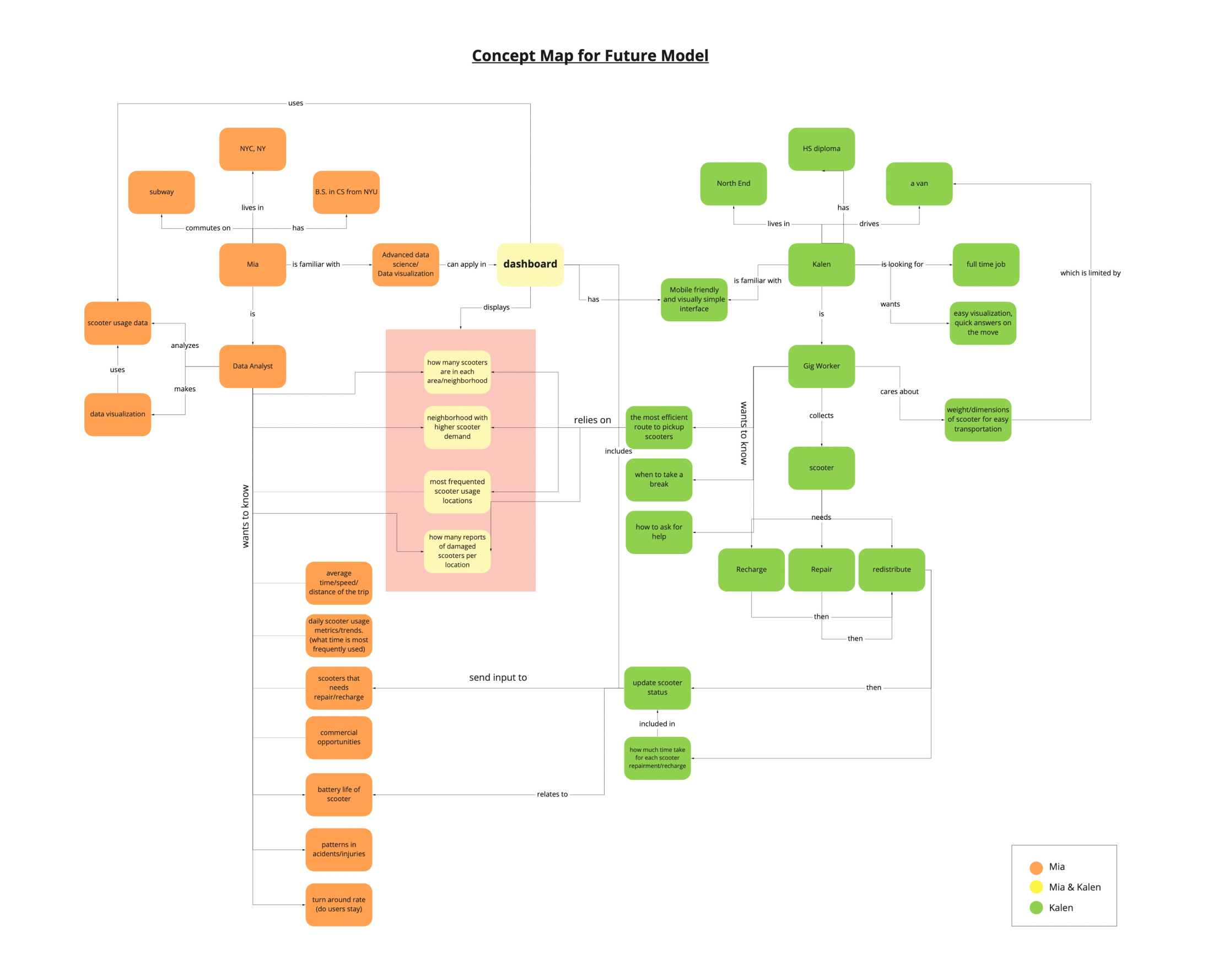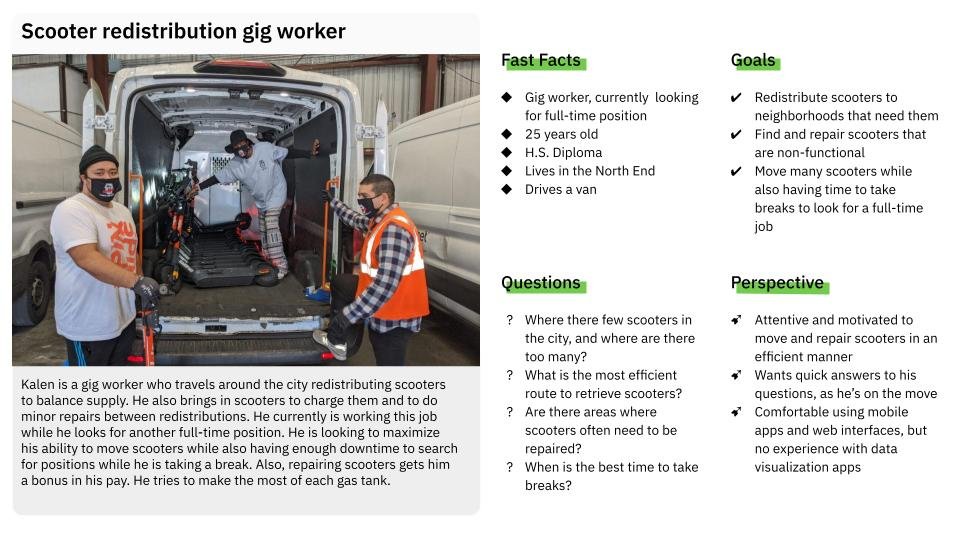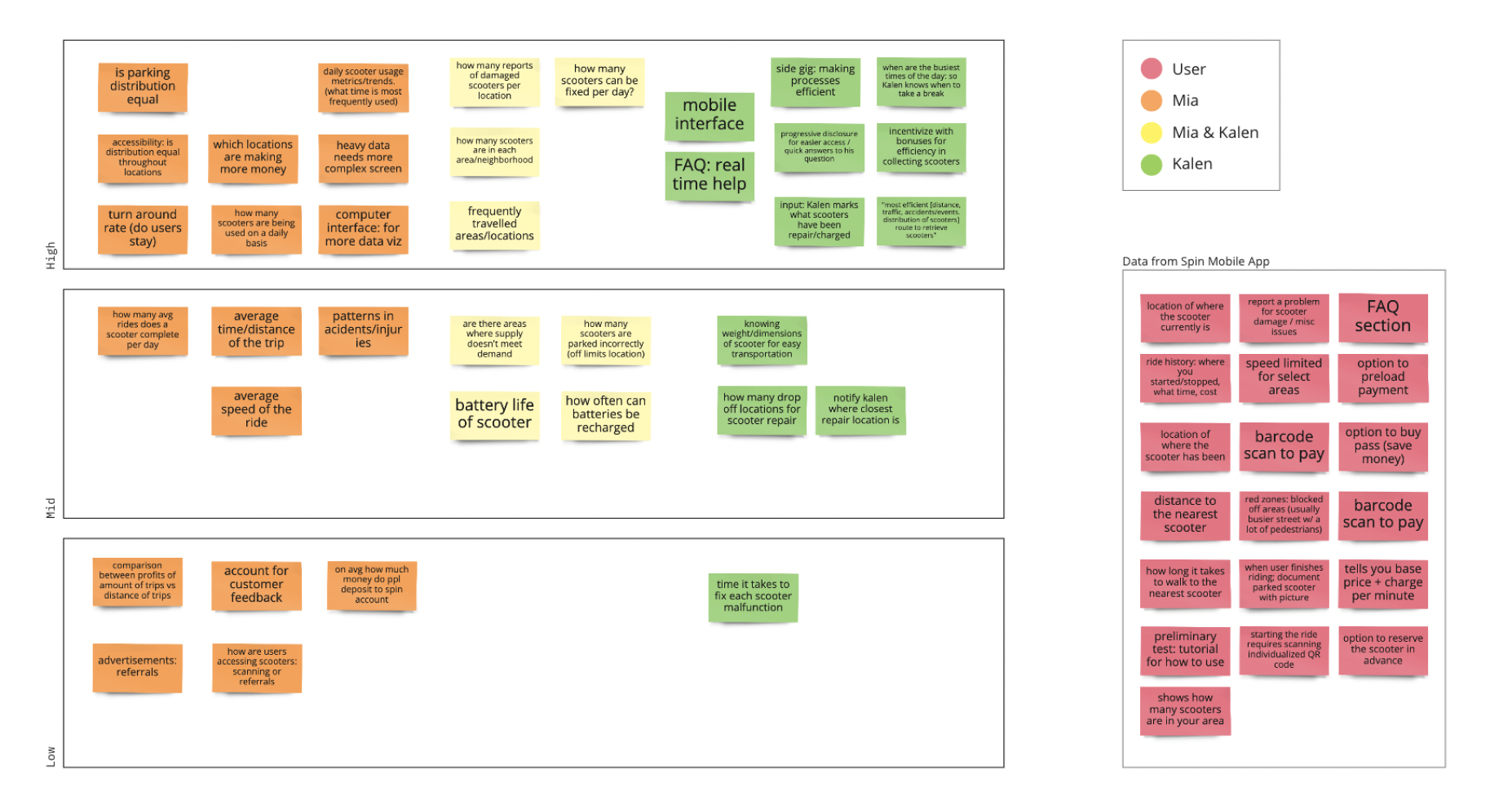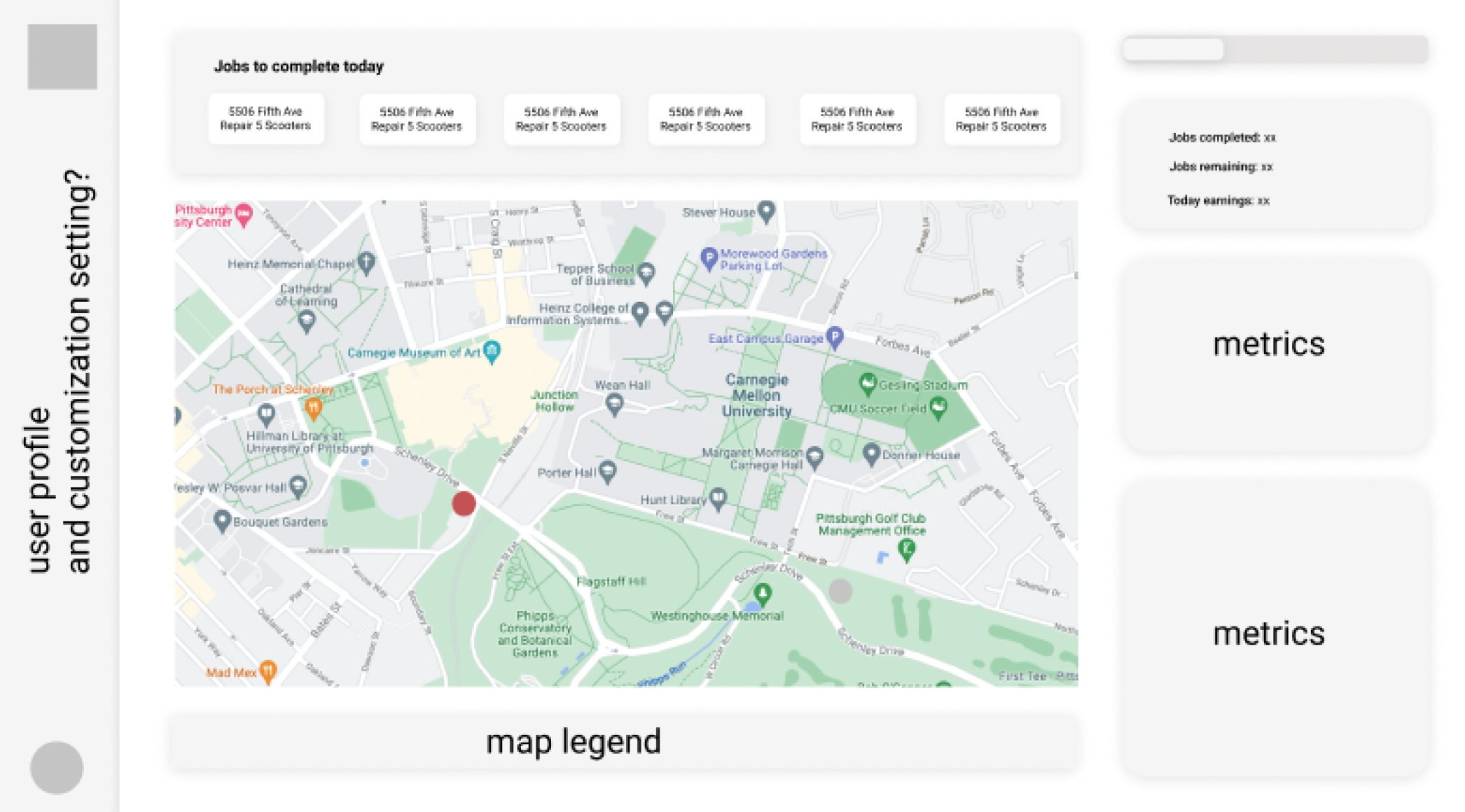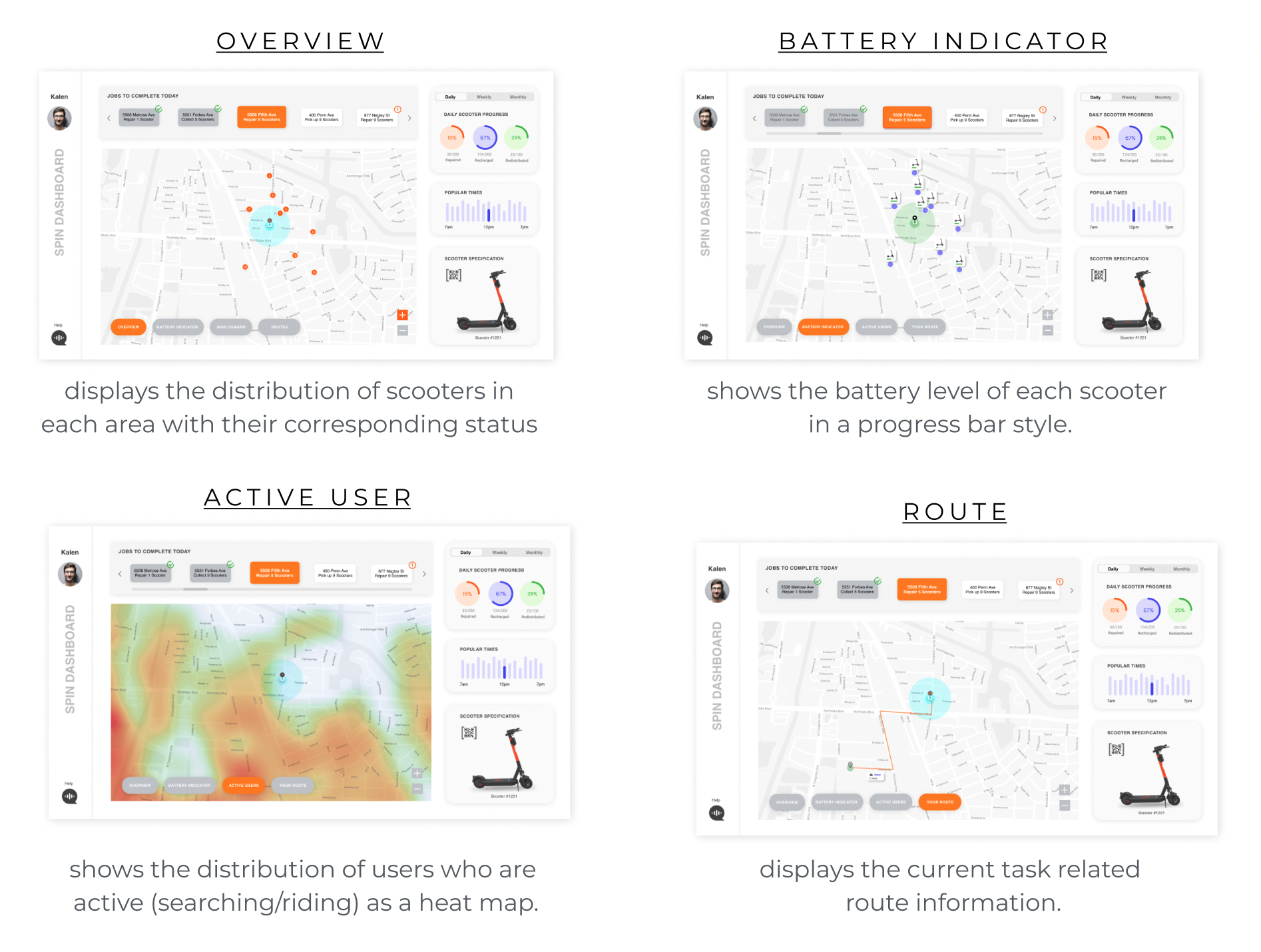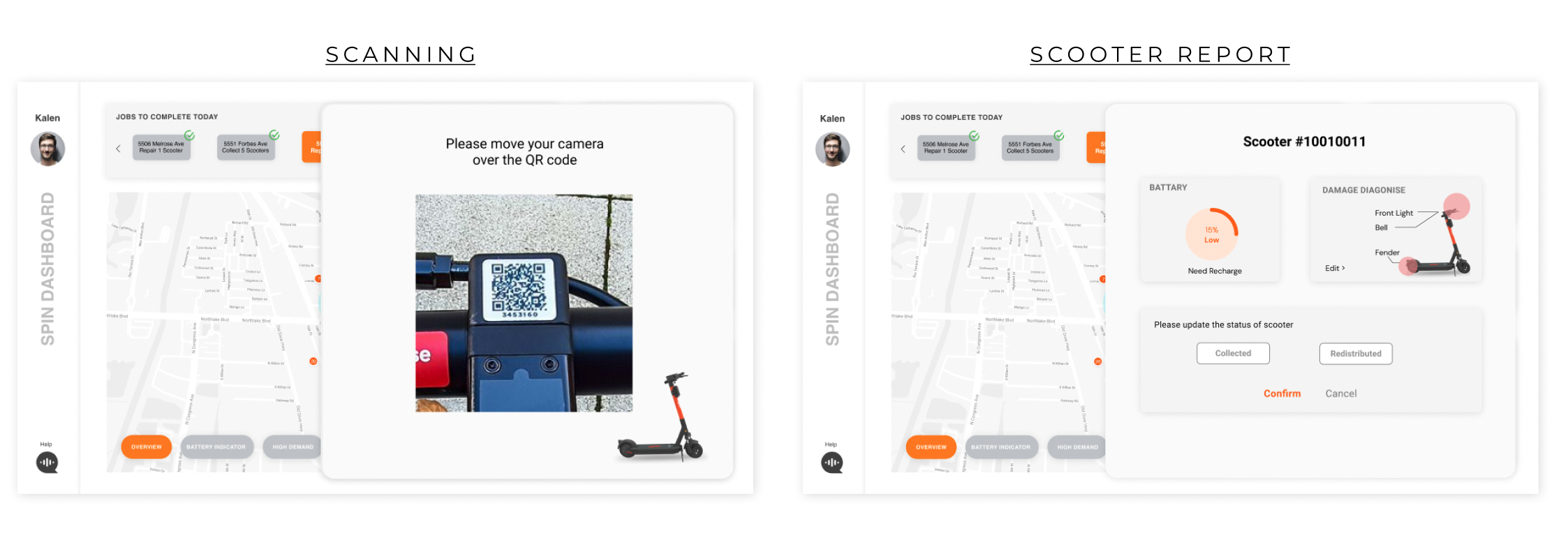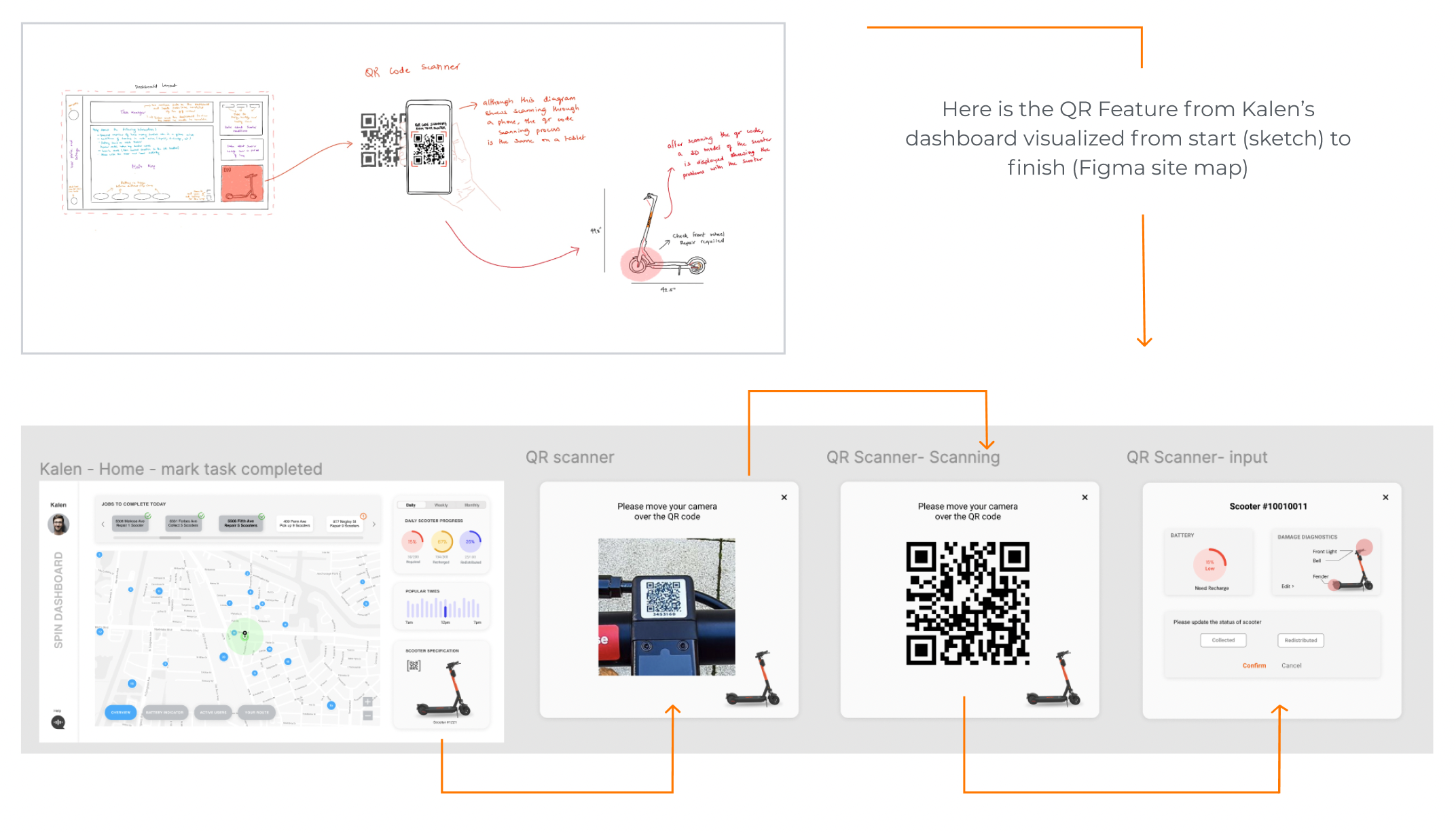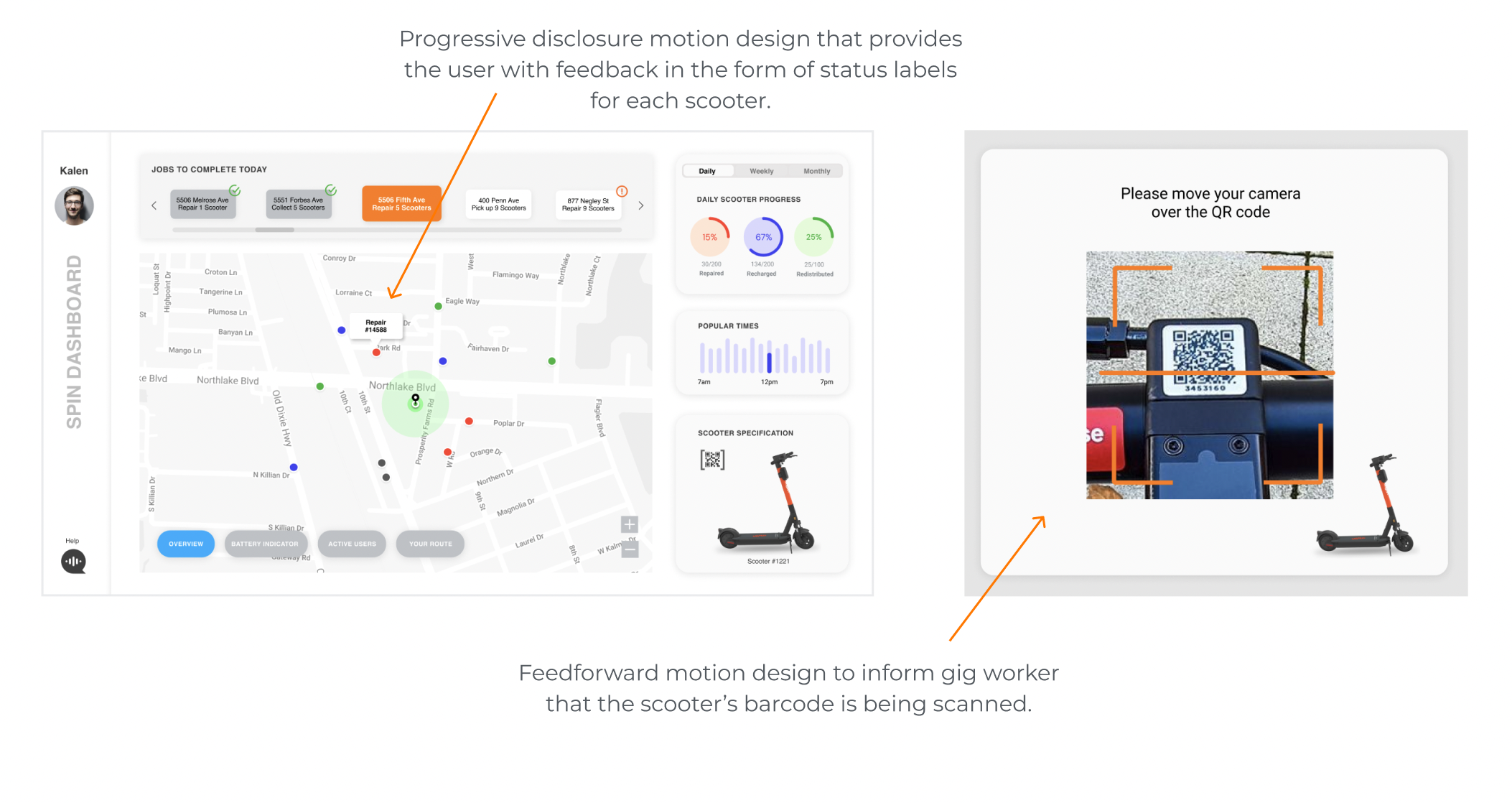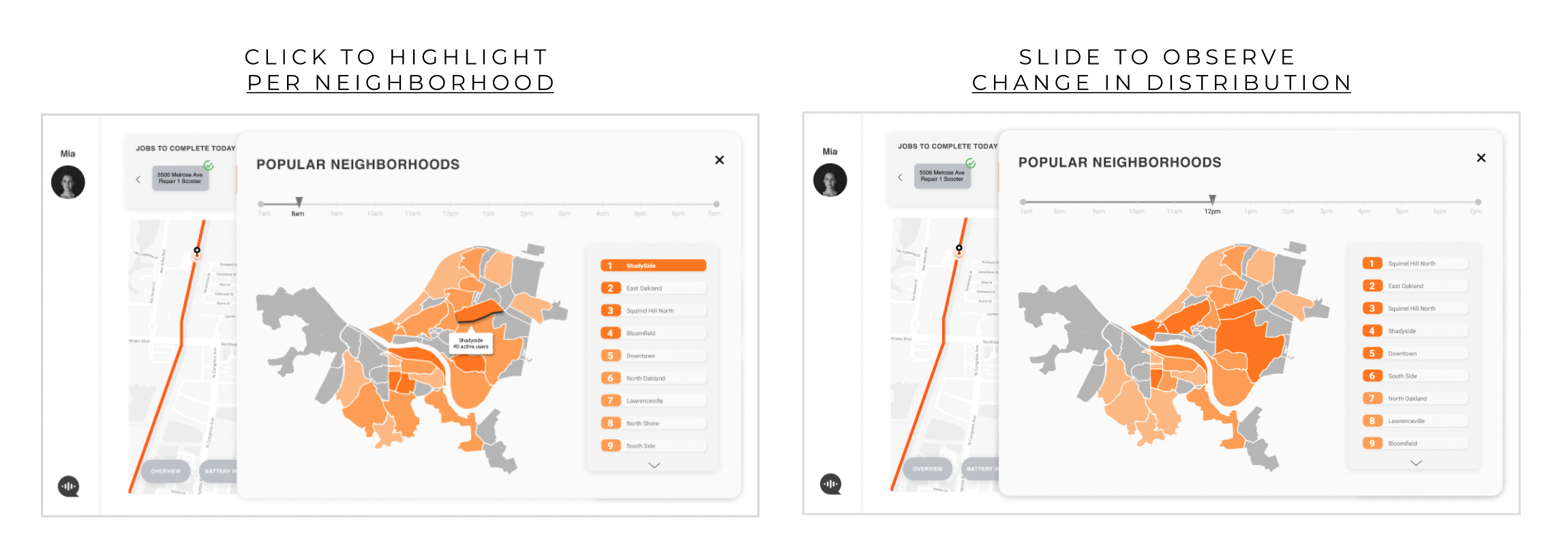
Conversely, the future state model highlights one main element: the dashboard. Before moving onto the dashboard iteration phase, the team wanted to have a good understanding of how Mia and Kalen can both benefit from the same dashboard design. In addition to the essential scooter data, we wanted to focus on bridging the communication gap between the two personas.
